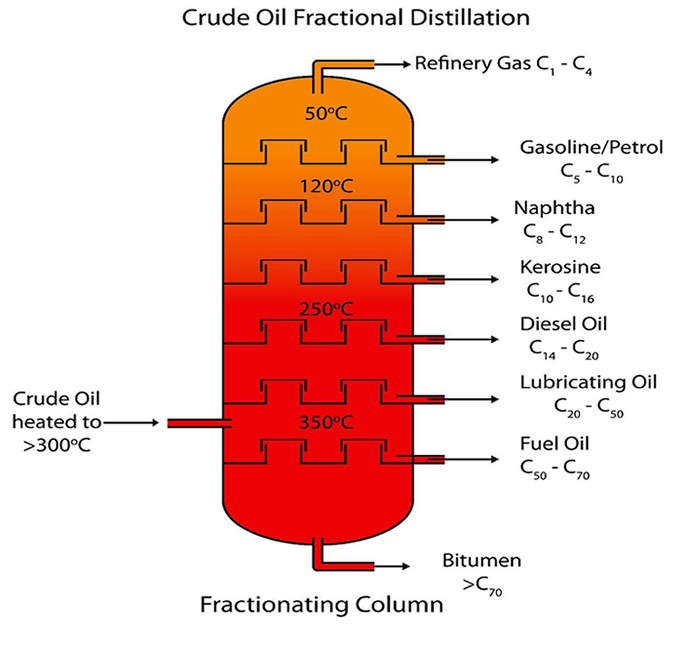Since the 1990s, the rise in the price of petroleum crude oil has risen, driving the price of all petroleum products in the world to rise, first of all, the rise in fuel prices. Moreover, due to the world’s demand for energy, with the rapid development of the world economy, China’s rise has made the world’s petroleum energy supply in short supply, so China’s oil fuel has been at a high price. As a result, China’s waste oil has become more of a fuel market, and all of China’s waste lubricating oil recycling plants are in a shortage of raw materials.
At present, many of China’s waste lubricating oils are directly blended into fuel oil without going through heavy metal removal. The heavy metal oxides in the smoke generated after combustion have become a major public hazard. Waste lubricating oil is used as a fuel instead of furnace oil, and it is mostly used directly or after dewatering. A large number of them are used for small household heating air heating furnaces. These furnaces were originally designed to burn diesel or furnace oil, but since the waste lubricating oil is cheaper, many people burn the lubricating oil in these furnaces. The United Kingdom has studied the effects of burning waste oil in small household heating furnaces. This small furnace has a power of 49 kW. The air atomizing nozzle is used to atomize the waste lubricating oil and burn in the furnace. The flue gas is directly discharged from the furnace into the chimney, and the smoke is 6.5m high. The direct burning waste lube oil mixtures collected from the whole country, the dehydration and devolatilization treatment of the re-purification oil mixtures, and the original design of the diesel oil used in this furnace, the three kinds of oils were burned in this furnace.
The untreated waste lubricating oil contains a large amount of water, affects combustion and absorbs the heat of evaporation, so that the thermal efficiency is lowered, and a small amount of volatile matter may cause an explosion when the furnace is turned off and reignited. The common problem of waste oil and re-purification oil is that the heavy metal content is high, and there is a problem of heavy metal oxide in the flue gas after combustion. Diesel is basically free of water and heavy metals. The concentration of particles dispersed from the chimney after combustion of the three fuels is listed in terms of flue gas in three standard states. The most commonly used method for indicating flue gas concentration is the standard state under 10% Co2.
When burning waste oil and re-purifying oil, the concentration of particles in the generated flue gas is similar, which is 12-14 times higher than the concentration of particulates in the flue gas of diesel fuel. The heavy metal particles in the flue gas from the untreated waste oil and the re-purified oil are 22-37 times higher than the concentration in the flue gas from the diesel fuel. Particularly noteworthy are fine particles of lead and zinc, and about 80%-90% are fine particles having a size of 5 to 10 microns or less.
It has been confirmed that lead oxide in the flue gas of burned waste oil is ultrafine particles, and it is difficult to settle to the ground, and the half life in air is 6-12 months.
According to Keddie’s formula, based on the lead concentration in the flue gas of burnt lubricating oil, assuming the wind speed is 5 m/s, the lead concentration near the ground is 6-9.7 mg/m3, which is much higher than the maximum allowable concentration of 2 mg/m3 in British government publications.
The US Environmental Protection Agency has pointed out that the average concentration of lead oxide in the air is 2mg/m3, and continuous exposure for 3 months has adverse physiological effects that endanger human health.
It can be seen that the direct burning of the lubricating oil or the re-purification of the oil is similar to the heavy metal pollution of the air, and the pollution level has reached a level that can significantly affect the health of the human body. Therefore, it is not suitable to use this way, and it is necessary to take the road of pollution-free combustion.
The pollution-free combustion of waste lubricating oil is relatively easy to achieve on a large furnace. As long as there is a particulate trapping system in the flue gas, the concentration of harmful particulates in the discharged flue gas is reduced below the allowable concentration.
Another method is to dilute the waste lubricating oil containing too much heavy metal with a fuel that is substantially free of heavy metals and formulate it into a fuel containing less heavy metals. The United Kingdom has a patent for blending waste lubricating oil with kerosene into diesel. In order to achieve the heavy metal content in the flue gas after combustion is not exceeded, the proportion of waste lubricating oil is quite small.

